To celebrate the 40th anniversary of the minifigure, LEGO collected and sent out a big bundle of assets to LEGO fan sites to enjoy and share with their communities. The original date when the first minifig patent was registered in Denmark was August 29th 1977, however, the first minifigures weren’t launched until 1978. Today, we will look at the timeline of the development of the LEGO minifigure, as summarized by LEGO. Also included are some cool images from the LEGO archives, and some very interesting footage from the LEGO factory in Kladno, Czech Republic, where minifigs are made. We will follow up with other articles from the assets LEGO sent us in the following weeks. Enjoy the walk down memory lane! 🙂
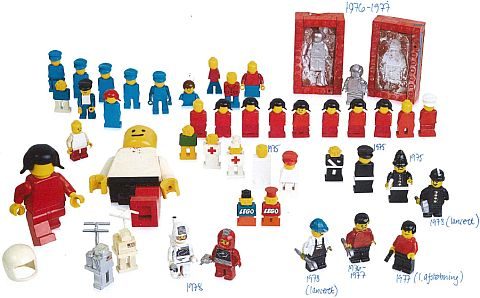
➡ 40TH ANNIVERSARY OF THE LEGO MINIFIGURE
In 1978, Disco was dominating the charts, mobile phones were non-existent and the Internet was still more than a decade away. It was also the year the very first LEGO minifigures went into production. Fast forward to today and those inaugural characters have evolved nearly as much as the world around them, offering endless roleplay possibilities. So, as one of the planet’s tiniest icons celebrates its big 4…0, here are some milestone moments from its very big story (click image for larger view).
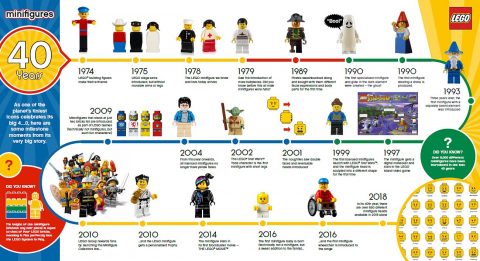
➡ THE EVOLUTION OF THE LEGO MINIFIGURE
It all started in 1974 when the LEGO building figure was launched, made mostly of large square LEGO bricks with moveable arms but immoveable legs. This was followed in 1975 by LEGO stage extra figures with solid torsos, immoveable arms and legs, and no printed features. Basically, very different to the LEGO minifigures we know and love today! Not that we had to wait too long for them to arrive, with 1978 ushering in a new era of LEGO minifigures equipped with moveable limbs and simple facial expressions comprising two solid black eye dots and black painted smile. Fast forward to 2018 and there are now more than 650 unique faces in the collection, meaning children can have fun roleplaying different characters and personalities – anytime, anywhere.
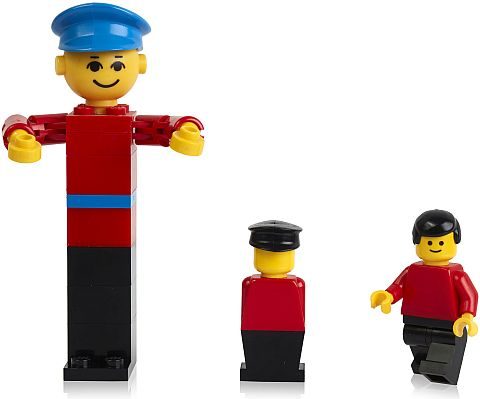
➡ THE LEGO MINIFIG: FROM 20 TO 8,000
To begin with, there were around 20 different LEGO minifigure characters, including a police officer, doctor, firefighter, knight and astronaut. But in the four decades since, the number of minifigures available has risen to more than 8,000. To put that into context, if the global population had grown at the same rate, there would now be nearly 144 trillion of us living on Earth!
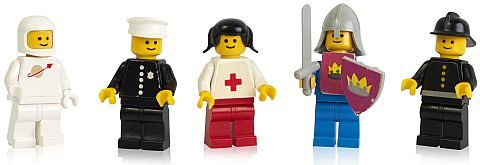
➡ THE LEGO MINIFIG: THE PERFECT HEIGHT
Take away the hair or any other headpiece and LEGO minifigures are exactly the same height as four LEGO bricks fitted together. This means they fit perfectly into the LEGO System in Play. Oh, and if you stacked them head to toe, you would need 20,750 to reach the height of the world’s tallest building, Dubai’s Burj Khalifa.
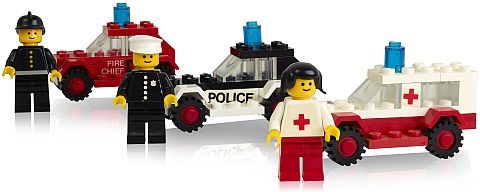
➡ THE LEGO MINIFIG: JACK OF ALL TRADES
Over the years, LEGO minifigures have shown they can turn their hand to pretty much anything. From pirates to paramedics, engineers to elephant keepers, veterinarians to Vikings, there have been thousands of different minifigure characters. Three LEGO minifigures even blasted into space onboard NASA’s Juno spacecraft in 2011. But one thing has remained consistent throughout: whatever role, character or personality children fancy playing, there’s sure to be a minifigure to match.

➡ THE LEGO MINIFIG: DIVERSITY CHAMPION
Did you know the traditional yellow color of the LEGO minifigure’s head was chosen based on focus group feedback in the early and mid-1970s saying this was preferable to white ones? Since then, minifigures have become increasingly diverse – from the first figures with natural skin tone in 2003 (Lando Calrissian from Star Wars and NBA basketball players) to 2016’s inaugural wheelchair. LEGO minifigures have also done their bit for unstereotyping gender roles with the likes of female firefighters and ninjas, through to fathers equipped with baby carriers. In fact, the whole point of minifigures is they let children create and be anyone they want – male or female, helmet or hair, freckles or glasses, anything. And if you’re worried about our robotic friends, don’t be. There have been plenty of C-3POs and R2D2s (not to mention other robots) too.

➡ THE LEGO MINIFIG: HOLLYWOOD STAR
The LEGO minifigure has starred in a number of Hollywood blockbusters, including The LEGO Movie, The LEGO Batman Movie, and The LEGO Ninjago Movie. In 2007, the LEGO Group even created 10,000 gold chrome C-3PO minifigures packed in random sets to mark the 30th anniversary of Star Wars.

➡ THE LEGO MINIFIG: 1978-2018 PRECISION MATES
Did you know that eight different moulds are used for the production of every minifigure? Two sets of these moulds are the same in design but reversed to mould the right and left minifigure arms and legs! The precision that goes into these moulds is exceptional, and because the original moulds are almost identical to the ones we use today, minifigures from 1978 can be mixed and matched with the more modern characters from today! However, one thing that has changed is the number of elements each mould can produce and the speed scale of this – for example, the minifigure head mould construction has improved from an initial eight elements per 9.8 seconds to 128 elements per 14.7 seconds today!
➡ THE LEGO MINIFIG: MORE THAN JUST A FIGURE
LEGO minifigures may be made for fun but there’s a serious side to them as well. By offering an endless choice of roleplay possibilities, they’re designed to let children play inventively, engage with different emotions and tell their own stories. First and foremost, that means a whole lot of enjoyment. But, crucially, it also allows young people to develop key life skills like emotional intelligence, creativity and communication – skills that, according to new research for the LEGO Play Well Report, parents believe will be vital to helping their children build their own bright future.

Fascinating stuff, isn’t it? I particularly like to see the early minifig prototypes, and how the design of the LEGO minifigure evolved. Seeing the minifig production from start to finish is very interesting as well. What do you think? How do you like these historic images? Do you have any of the earliest minifigures? Feel free to share your thoughts and discuss in the comment section below! 😉
And you might also like to check out the following related posts:












Oh, dear! Those minifig prototypes are dreadful! I have never seen those before! Did they just crawl out of the Lego vault?
Something like that. Promotional photos apparently being sent out to most major Lego blogs and forums.
Yes, we got them last week. 6 GB of LEGO goodness in total! Most of the LEGO fan sites are drip-feeding them to their communities, which is also my plan. 😀
Yeah, it’s amazing that there are still some unknown parts of LEGO history like this! It’s super cool. And yes, they do look a little scary. 😈
That video is fascinating. The first time I have seen it. So much goes into making minifigs!
This is super interesting stuff. Looking forward to the other parts.
It’s amazing how far Lego has come in making the mini figures better over the years. It’s also interesting how much a child had to use a lot of there imagination and how that has changed. Now we even have two sides faces.
Kids used their imagination, but they also used other toys with LEGO to compensate for what was lacking. Which is how kids play these days too. While as adults we have the luxury of buying the majority of the LEGO sets (and other stuff) we want, most kids don’t have that privilege. They end up with maybe a handful of LEGO sets in their entire childhood, and a few prized minifigures. So, they have to add other toys, make things out of cardboard, paper, pillows, etc. Whatever works. Kids are naturally playful and creative, and they will always add their own flair to things. 😀
I remember some of those handless, legless, faceless minifigs. My dad had some in his collection. They later got smiley faces and stickers for decorating their torsos.
I think the stickers appeared with the very first actual minifigs, although Lego soon got around to regular torso printing (excluding promotional sets in limited production, which received torso stickers for a long time, and still might).
With those weird looking prototypes, they were probably just trying to work with the shape of the standard bricks. It’s remarkable that we still use the same head, hair and hats as the first armless minifig. The policeman hat is still in production! That just shows how much Lego takes their system seriously. I can only think of Playmobil as another toy company that still uses the same system as what they began with.
Super cool video! I wish I could visit the Lego factory. I want to see how everything is made!
Very true. I was just comparing both back than to now a days. These days some parents introduce technology at a young age but, back then kids had to create their own imagination not to be influenced by technology . Yes, their is big change between the two . Maybe it’s just me, because I always had to rely on my imagination . I couldn’t play sports ( do to a heart condition) I was always on the side lines by myself that’s where my imagination would come in handy. Teachers today have a hard time getting kids to be creative . Maybe that is why Lego is being used in a class room . But, at a toddlers age yes they do go in there imaginary place when there playing. Of course some adults keep it with them until they die.lol!
Yeah, kids are bombarded with instant, ready-made gratification. Hopefully, they are able to navigate the confusing maze. Some do, and turn out to be creative people for the rest of their lives, and some fall into depression because they never learn how to find satisfaction from the inside. We live in a dangerous world. But it was always dangerous, just in different ways…
…Then again I it mainly depends on child it self . I think imagination is a form of learning and kids learn at a different Pace or way. It’s kind of like looking a cloud and child sees one thing and the other child sees something else. Just an opinion .
Oh! I love cloud guessing! I still play it all the time both with kids and adults. 😀
I have an issue of the Belgian comic magazine Spirou from the late 70’s, and there’s a feature on model trains where the writer (a young boy) comments on that “the new Lego figures” would work perfectly with the trains… It’s a bit fascinating, since I was born in late 1980, and to me, they’ve always been around. (I also had a few of the maxifigs and proto-minifigs/ stage extras on my house in the countryside, though.)
That’s really interesting. I wonder how common it was in the 70s and before to have small action figures. Of course, army men have been around for a long time, but I wonder about the availability of civilians. Perhaps the boy mentioned LEGO minifigs because there were not too many options for civilians? Just wondering…
I think there were spare packs of figures you could buy for the main model train scales around the time, but maybe the Lego minifigs looked cuter and were more widely available or something… And also more poseable than most other figures…
That’s very likely true about the posability. My grandparents and my parents had some old toys, and my understanding is that in their childhoods plastic toys were either non-existent or pretty rare. Small wooden toys and lead army men did not have much (if any) posability. And yes, minifigs are cute too! 😀